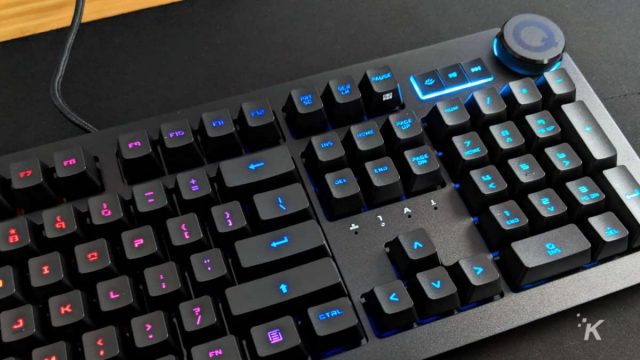Whether you game or work on a computer, a keyboard will be one of the most important touch points, able to change the feel of your computer as a whole. In recent years we have seen the rise of the mechanical keyboards with mechanical switches.
Unlike the previous more common membrane switches, mechanical switches offer a much better actuation feel and, in most cases, better reliability too. With all the different kinds of mechanical switches available, it can be difficult to choose one, not knowing the qualities that change between them. In the below, we will discuss the different qualities of a mechanical switch to help you choose the right switch for your use case.
Tactile Versus Linear
Tactile and linear both refer to the feeling of the switch in question. There are many debates which argue which is better for which use case, the chief among which is that tactile is better for typing while linear is better for gaming. The truth of the matter is that there is no better switch type, the best feeling of a switch is the one that you prefer.
- Tactile – tactile switches have a small but very noticeable bump in the travel of the switch making for a keypress which offers more feedback and conformation that the key has been pressed. The bumps can come in an array of sizes for more aggressive feedback.
- Linear – Linear switches offer smooth travel with no specific feedback on the switch until bottoming out. Many would argue that this can increase the speed at which you use the switch, which is somewhat irrelevant without taking the weight into account.
Both tactile and linear switches are usually available with clicky and non-clicky variants, take note of your surroundings before choosing a clicky switch as some are known to be quite loud.
Actuation Point
Mechanical switches have a certain amount of travel depending on the key. The travel distance in a key is usually half of the bottom out distance, this is however not consistent through all mechanical switches. A notable outlier to this is the Cherry MX speed silver, which actuates at just 1.2 mm with minimal actuation force to make a fantastic touch typing experience.
- Actuation point – Usually ranging from 1 mm to 3 mm, the actuation point is the depth of the stroke at which the keyboard will register a button press. The shorter actuation points are great for those who are used to touch typing, while the longer actuation points are ideal for avoiding accidental typing for people who rest their fingers on keys.
- Bottom out travel – bottom out travel is the total stroke length of the key. Usually ranging from 3 mm to 5 mm.
Actuation Force
Actuation force refers to the amount of weight it takes to actuate the key. In tactile switches, the actuation force between actual key recognition and overcoming the tactile bump will vary, the difference is minor.
The force needed to actuate keys usually ranges from 20g to around 80g at the higher end, although there are keys like the Kailh ancient greys which go well above the 80g force. Actuation force is, again, personal preference. Do you prefer a heavier switch press which allows you to rest your fingers on the keys while playing at onlinebingocanada.co, or is touch typing something you would prefer? Either way, there is a switch weight which will work best for you.


